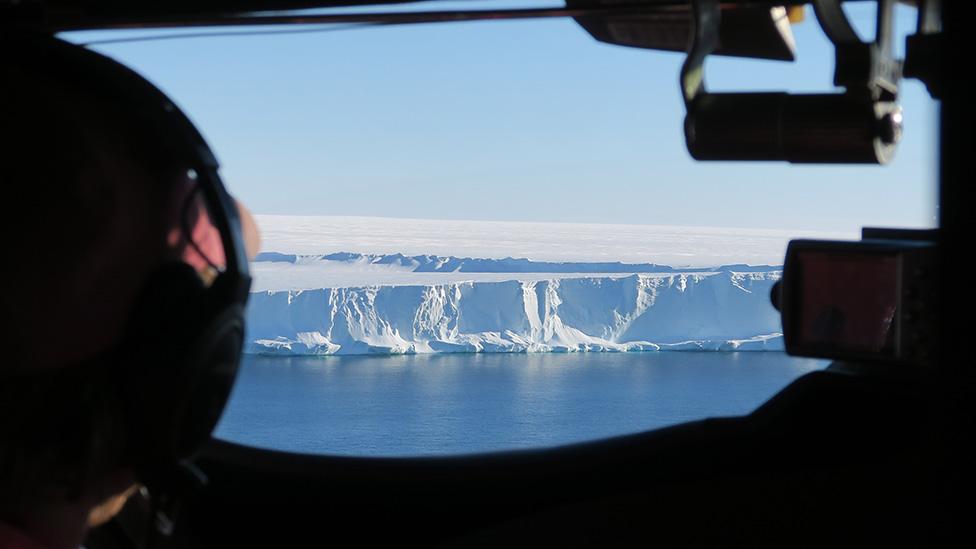Iceberg size of Greater London breaks off Antarctica's Brunt Ice Shelf
- Published
- comments

This is an old photograph showing the edge of the ice that has broken away
An iceberg nearly as big as Greater London has broken off the thick Brunt Ice Shelf in Antarctica.
Scientists who monitor the cracks in the ice there have been expecting it to happen, but they couldn't predict exactly when.
The good news is that it's not related to climate change.
So how and why has this happened?
The Brunt Ice Shelf is one of many ice shelves attached to the coastline of Antarctica.
The biggest is called the Ross Ice Shelf and is almost twice the size of the UK.
Ice shelves are permanent floating sheets of ice, that act as a kind of barrier between the land and sea.
They are usually around 150-200 metres thick.
You can see from this graphic just how big the new iceberg is
Every year ice shelves can grow or shrink up to a mile, before eventually a crack will begin to form in the ice, and a chunk may break off.
This is part of a natural cycle called calving that all ice shelves go through, and can take many years.
Scientists monitor any major cracks in the Brunt and noticed one - called Chasm One - was starting to open up again even though it hadn't been active for decades.
The discovery was made by the British Antarctic Survey (BAS) whose base - the Halley Research Stations - is located nearby.
This is what Chasm One looked like before the iceberg broke off
The next step is for scientists to look at the satellite images from before and after the calving to make sure there are no threats to the research station.
They'll also keep an eye on where the new iceberg is heading.
A similar sized berg, known as A74, calved in February 2021 further to the east but the last major chunk to come off the Brunt was all the way back in 1971.
The UK has had a research station on the Brunt Ice Shelf since 1957
Scientists will also be keeping an eye on the so-called 'Halloween crack' which appeared in October 2016.
This is because the calving of large bergs from the shelf can result in the ice flowing more quickly.
This could mean more cracks could start to accelerate, and the Halloween crack is one they're keeping a close eye on to check its reaction.
- Published16 July 2018
- Published20 January 2023
- Published15 February 2021
